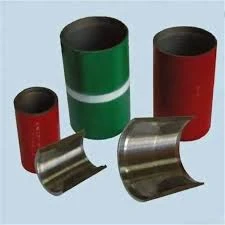- Afrikaans
- Albanian
- Amharic
- Arabic
- Armenian
- Azerbaijani
- Basque
- Belarusian
- Bengali
- Bosnian
- Bulgarian
- Catalan
- Cebuano
- Corsican
- Croatian
- Czech
- Danish
- Dutch
- English
- Esperanto
- Estonian
- Finnish
- French
- Frisian
- Galician
- Georgian
- German
- Greek
- Gujarati
- Haitian Creole
- hausa
- hawaiian
- Hebrew
- Hindi
- Miao
- Hungarian
- Icelandic
- igbo
- Indonesian
- irish
- Italian
- Japanese
- Javanese
- Kannada
- kazakh
- Khmer
- Rwandese
- Korean
- Kurdish
- Kyrgyz
- Lao
- Latin
- Latvian
- Lithuanian
- Luxembourgish
- Macedonian
- Malgashi
- Malay
- Malayalam
- Maltese
- Maori
- Marathi
- Mongolian
- Myanmar
- Nepali
- Norwegian
- Norwegian
- Occitan
- Pashto
- Persian
- Polish
- Portuguese
- Punjabi
- Romanian
- Russian
- Samoan
- Scottish Gaelic
- Serbian
- Sesotho
- Shona
- Sindhi
- Sinhala
- Slovak
- Slovenian
- Somali
- Spanish
- Sundanese
- Swahili
- Swedish
- Tagalog
- Tajik
- Tamil
- Tatar
- Telugu
- Thai
- Turkish
- Turkmen
- Ukrainian
- Urdu
- Uighur
- Uzbek
- Vietnamese
- Welsh
- Bantu
- Yiddish
- Yoruba
- Zulu
coupling casing
Understanding Coupling and Casing in Engineering Applications
In the realm of engineering, particularly in mechanical and civil engineering, the terms coupling and casing play significant roles in the design and operational efficiency of various systems and structures. This article delves into these concepts, exploring their definitions, types, applications, and importance.
What is Coupling?
Coupling refers to a device or mechanism that connects two shafts or multiple components in machinery to transmit power or motion. This connection allows different parts of a machine to work together while minimizing the transfer of vibrations and misalignments. In essence, coupling serves as a bridge that enables components to operate as a cohesive unit.
There are several types of couplings, including
1. Rigid Couplings These provide a fixed connection between shafts, ensuring that both rotate at the same speed and in sync. However, they don't accommodate any misalignment or axial movement, making them suitable for applications where precision is critical.
2. Flexible Couplings Unlike rigid couplings, flexible types allow for some degree of misalignment and movement. They can absorb shocks and vibrations, making them ideal for equipment subjected to torque variations or misalignment, such as in engines and conveyor systems.
3. Oldham Couplings This type of coupling consists of two hubs and a floating disc, allowing for angular misalignment. They are particularly useful in applications where shafts might be offset.
4. Bellows Couplings Made of a thin-walled bellow material, these couplings accommodate significant angular and axial misalignments while providing a high degree of torsional rigidity.
What is Casing?
Casing, on the other hand, refers to a protective or structural layer that surrounds an object. In engineering contexts, it often pertains to structures like pipes, well casings, or structures housing various components. The purpose of casing includes protecting the inner components from external factors, providing structural integrity, and often aiding in safety.
There are a variety of casing types used across different fields
coupling casing

1. Well Casing In the oil and gas industry, well casings are crucial for maintaining the integrity of boreholes. They prevent the collapse of the well and protect groundwater from contamination.
2. Piping Casing In plumbing and hydraulics, casings safeguard pipes from environmental impacts, reducing wear and tear due to weather or chemical exposure.
3. Instrument Casings Many electronic devices require casings to protect sensitive components from dust, moisture, and physical impacts.
The Importance of Coupling and Casing
The interplay between coupling and casing is vital in numerous applications. For example, in a typical motor-driven system, couplings link the motor shaft to the driven equipment, ensuring efficient power transmission. Meanwhile, casings provide the necessary protection to the motor and the connected components, ensuring their operational longevity.
In manufacturing processes, the integrity of coupling mechanisms directly impacts efficiency and productivity. A worn-out coupling can lead to operational failures, resulting in costly downtimes. Similarly, if casing fails in a pipeline system, it can lead to catastrophic leaks or damage.
Applications in Engineering
The applications of coupling and casing are vast and varied. In the automotive industry, couplings are essential in vehicle drive trains, permitting smooth interaction between the engine and the wheels. The casing in vehicles protects the engine components from dust and heat, ensuring performance and safety.
In construction, couplings are used in heavy machinery to connect different mechanical systems. Casings in structural elements like beams and columns ensure stability and resistance against environmental forces. Thus, the combined application of coupling and casing greatly enhances the reliability and functionality of engineering systems.
Conclusion
In summary, coupling and casing are integral components of modern engineering, impacting the performance, safety, and durability of various systems and structures. Understanding these concepts facilitates better design and maintenance practices, ultimately leading to enhanced operational efficiency across multiple industries. As technology advances, innovations in coupling and casing design will undoubtedly continue to evolve, paving the way for more efficient and safer engineering solutions.
-
Tubing Pup Joints: Essential Components for Oil and Gas OperationsNewsJul.10,2025
-
Pup Joints: Essential Components for Reliable Drilling OperationsNewsJul.10,2025
-
Pipe Couplings: Connecting Your World EfficientlyNewsJul.10,2025
-
Mastering Oilfield Operations with Quality Tubing and CasingNewsJul.10,2025
-
High-Quality Casing Couplings for Every NeedNewsJul.10,2025
-
Boost Your Drilling Efficiency with Premium Crossover Tools & Seating NipplesNewsJul.10,2025







